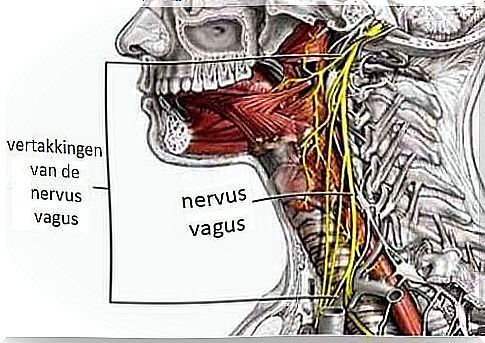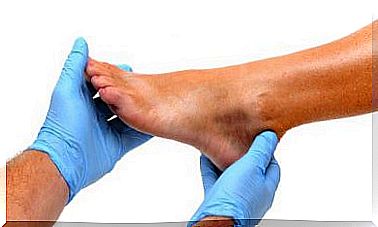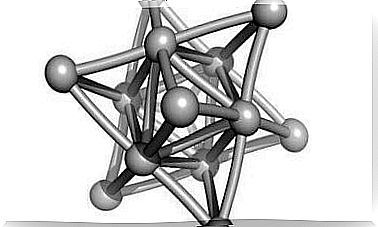Wake Up Your Vagus Nerve And Boost Overall Health
Human beings have twelve pairs of nerves that start in the brain. Of these nerves, the tenth is definitely the most interesting and the most powerful: that is the vagus nerve.
The vagus nerve is part of the parasympathetic nervous system and has a very interesting job. It is the nerve that helps you relax and achieve a state of calm to combat stress and anxiety. In addition, it helps you enjoy a sense of well-being that is essential for a better quality of life.
Not everyone realizes how important this nerve is in your body. It is easy to see why this is so. People are more focused on external stimuli than they listen patiently and intuitively to their own body.
Later in the article we will suggest that you set aside half an hour for yourself. Now you will learn how to ‘wake up’ your vagus nerve and improve your quality of life. If you apply this in your daily life, you will see the changes. Are you ready for it?
Where is the vagus nerve located?

The vagus nerve used to be called the pneumogastric nerve. This nerve begins in the medulla oblongata and then continues its long and fascinating journey through the:
- Pharynx
- Esophagus
- larynx
- airways
- Heart
- Stomach
- Pancreas
- Liver
The vagus nerve also passes through several arteries and motor fibers.
You could call the vagus nerve a long-distance highway that traverses the front of your body as it performs the following tasks:
- Gives you sensitivity.
- Stimulates the muscles of the vocal cavity and aids in communication.
- Hold the breath under control.
- Stimulates the production of oxytocin (the hormone that determines love and maternal bonding).
- Regulates the function of the liver and pancreas.
- And another funny fact: He stops the hiccups.
It is a structure linked to the health of the whole body
We all experience this every day: after eating a big meal, a feeling of fatigue sets in, like a kind of sleepiness that makes you want to lie on the couch or take a nap. This sensation is controlled by the vagus nerve.
After eating, the body uses a lot of energy to digest the food.
The vagus nerve produces a series of stimuli that encourage relaxation. So the result is the well-known drowsiness.
- In addition to controlling digestion, the vagus nerve also keeps an eye on the heart and keeps it from getting too excited.
- Some people suffer from a condition called ‘vasovagal syndrome’.
What happens in this syndrome? When a person gets too excited, whether it be with a feeling of fear or of affection, the vagus nerve causes loss of consciousness. In other words, the person faints. This is of course an extreme case .
- The vagus nerve also controls the immune system and cell renewal.
- Another function of this fascinating nerve is that it makes you feel full.
- Since it is very closely connected to the digestive system, it also acts as a regulator. The vagus nerve tells you when you’ve had enough and directs your appetite when you’re stressed.
As you can see, the vagus nerve helps in many ways: relaxation, satiety, your body weight, your anxiety or your lack of anxiety… It’s definitely a very interesting structure.
Technique to ‘wake up’ your vagus nerve
This is a simple technique. You don’t have to spend more than half an hour of your time on it, but you do have to apply the technique every day and at the same time of the day.
You will see that it is very similar to any other mindfulness technique you can use to relax. The core is always a form of controlled breathing.
Let’s see what to do:
- Wear loose, comfortable clothing.
- Lie down on an inclined surface. Make sure your head is lower than your feet (Trendelenburg position).
- Place a cool, damp cloth on your forehead.
- Breathe in through your nose for six seconds. Fill the lower part of your abdomen with air (abdominal breathing).
- Hold the air for six seconds while contracting the abdomen, as if someone is going to hit you at any moment.
- Now exhale deeply for seven seconds. You’re pumping up your belly while simultaneously squeezing your lips together as if you were blowing out a candle (this is the best way to connect the vagus nerve with oxygen and activate it).
- Repeat the exercise seven times.
- To finish, slowly sit back down. Wait another five minutes before standing. Relax. Once you’re standing, it’s a good idea to drink a glass of cool water.
As you have seen, this is a simple exercise to wake up the vagus nerve. It’s really all about the way you breathe. The technique shows a way of breathing that reactivates important bodily functions.









